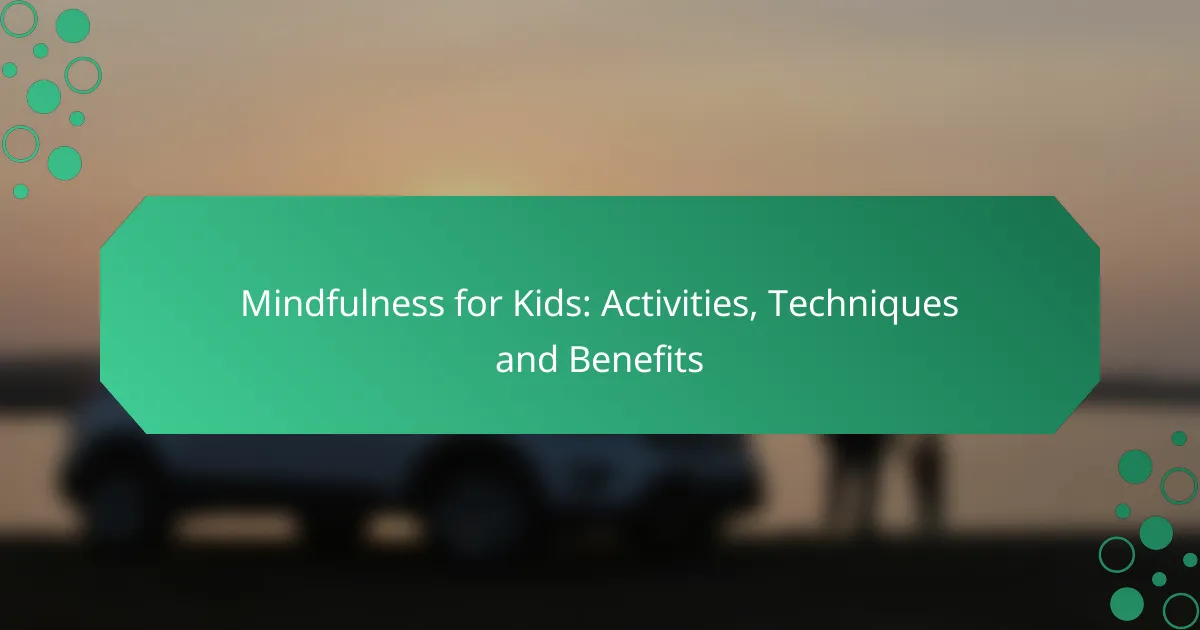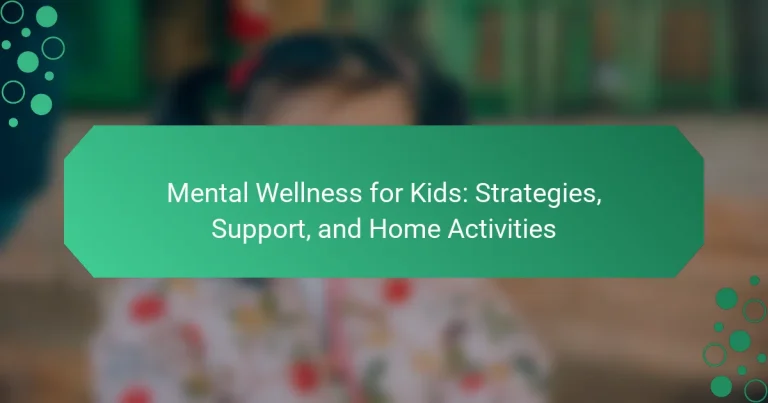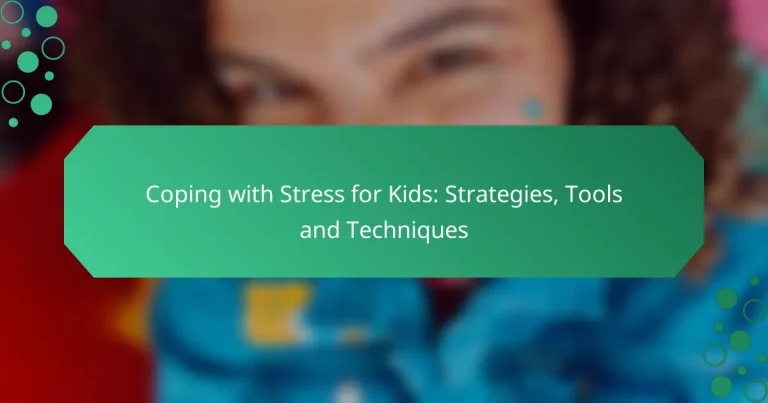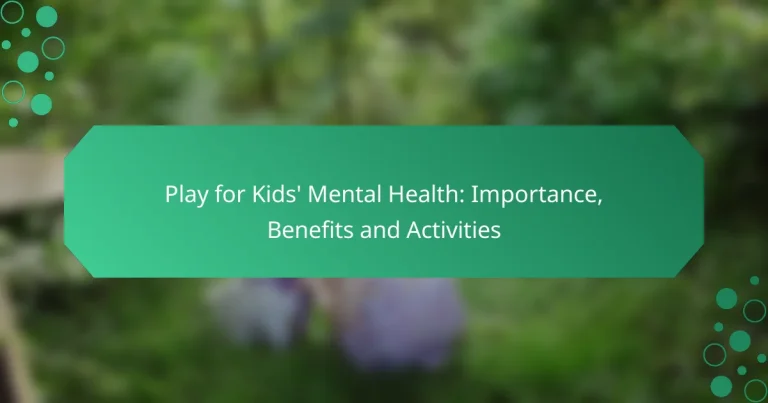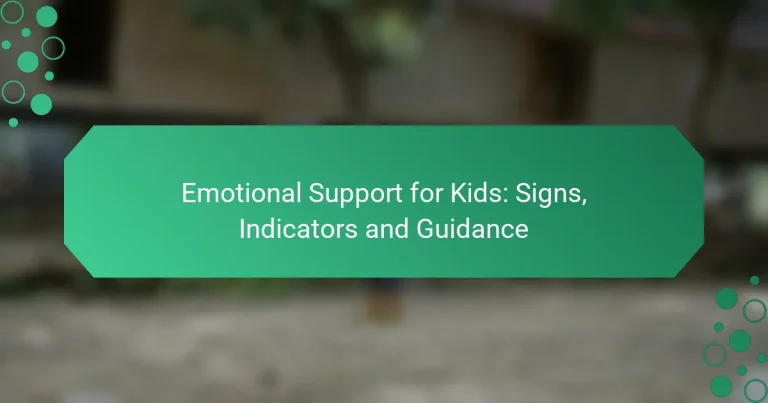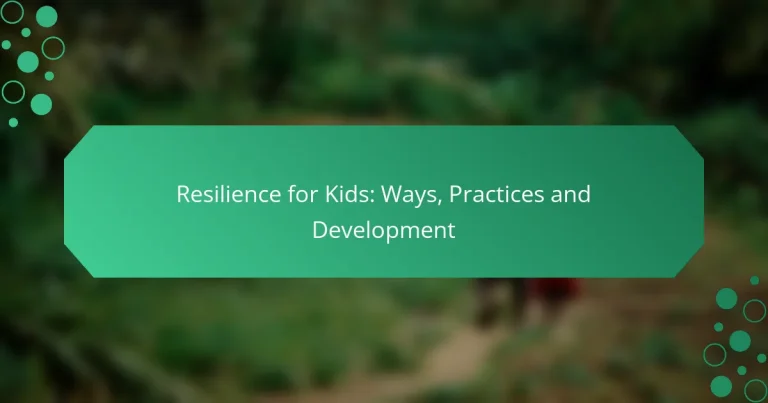Mindfulness for Kids: Activities, Techniques and Benefits
Mindfulness for kids is an essential practice that fosters focus, emotional regulation, and self-awareness through engaging activities. By introducing simple techniques tailored to their developmental stage, children can enhance their mental well-being, reduce anxiety, and improve social skills. These practices not only benefit individual growth but also create a positive environment for learning and interaction.
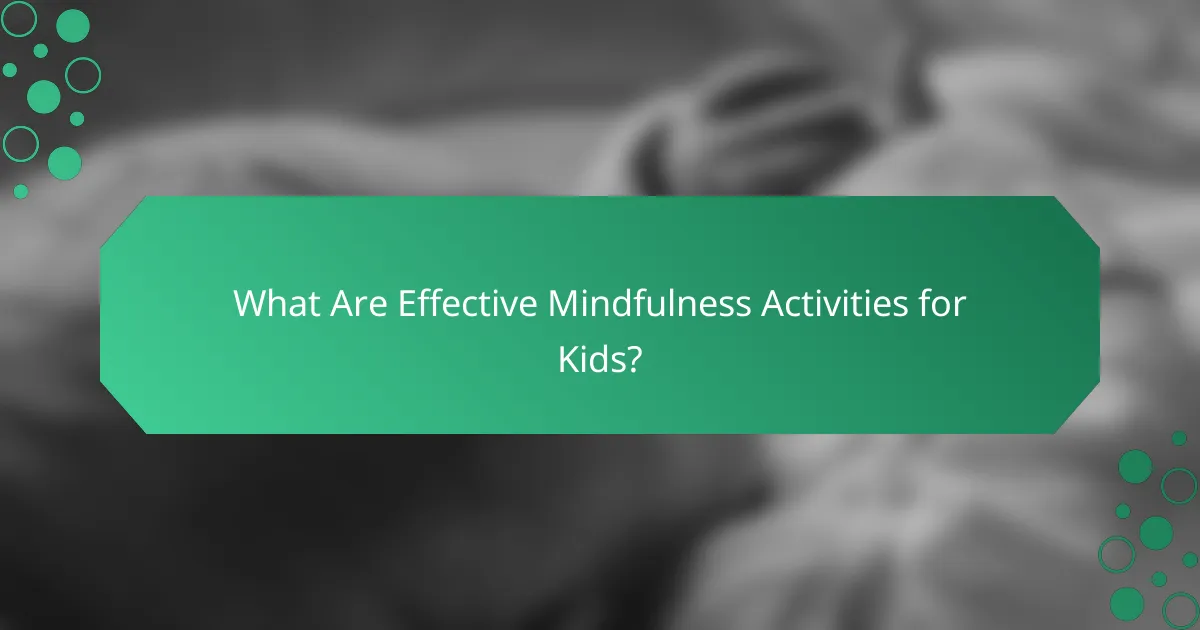
What Are Effective Mindfulness Activities for Kids?
Effective mindfulness activities for kids help them develop focus, emotional regulation, and self-awareness. These activities can be simple and engaging, making them suitable for various age groups and settings.
Breathing exercises
Breathing exercises are a foundational mindfulness activity that teaches children how to calm their minds and bodies. Simple techniques like deep belly breathing or counting breaths can be introduced, where kids inhale for a count of four, hold for four, and exhale for four.
To make it more engaging, you can use visual aids like a balloon or a pinwheel to show how breathing affects movement. Encourage kids to practice for a few minutes daily, especially during stressful situations.
Mindful coloring
Mindful coloring involves using coloring books or sheets to promote relaxation and focus. Children can choose colors intuitively and concentrate on filling in spaces without worrying about the outcome.
To enhance the experience, provide a variety of coloring materials such as crayons, markers, or colored pencils. Set aside a quiet space for this activity, allowing kids to immerse themselves in the process without distractions.
Nature walks
Nature walks encourage kids to engage their senses while exploring the outdoors. During these walks, children can observe the sights, sounds, and smells of nature, fostering a connection with their environment.
To make it more mindful, ask children to focus on one sense at a time, such as listening for bird calls or feeling the texture of leaves. Aim for walks that last around 30 minutes to an hour, allowing ample time for exploration and reflection.
Yoga for children
Yoga for children combines physical movement with mindfulness, helping them develop strength, flexibility, and focus. Simple poses like tree pose or downward dog can be taught in a playful manner, incorporating stories or themes to keep them engaged.
Consider short sessions of 15-30 minutes, focusing on breathing and relaxation at the end. Use colorful mats and props to make the practice inviting and fun for kids.
Gratitude journaling
Gratitude journaling helps children reflect on positive experiences and develop a positive mindset. Kids can write or draw about things they are thankful for, which can enhance their emotional well-being.
Encourage them to journal regularly, perhaps at the end of each day, and provide prompts to help them think of new things to appreciate. Keeping the journal colorful and personalized can make this activity more appealing.
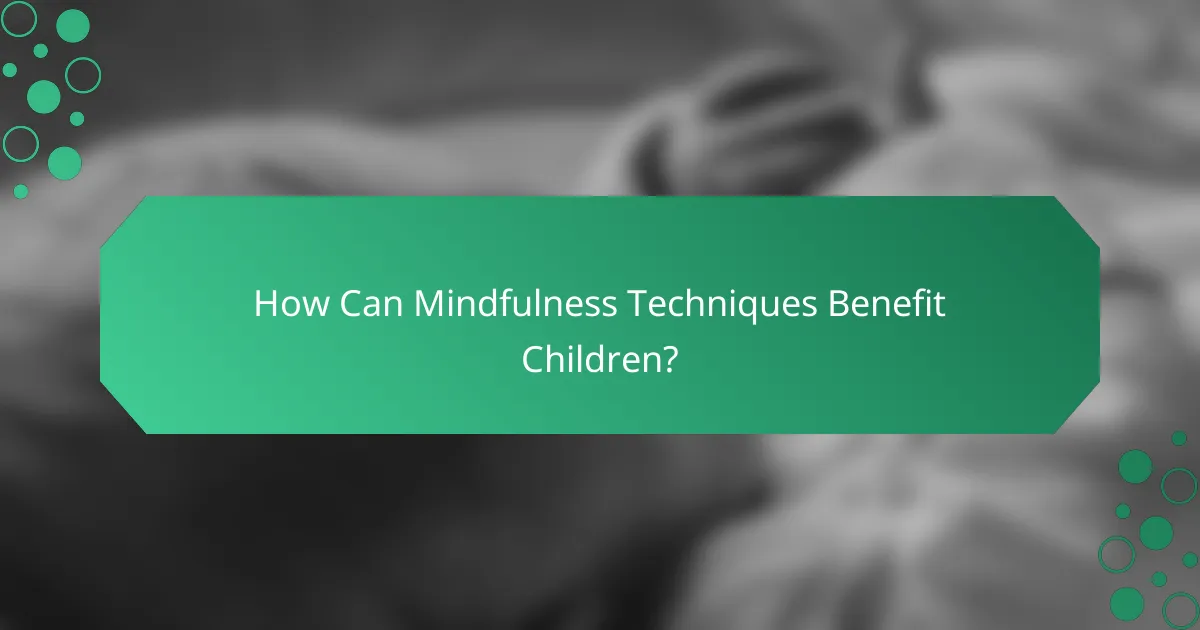
How Can Mindfulness Techniques Benefit Children?
Mindfulness techniques can significantly benefit children by enhancing their mental and emotional well-being. These practices help children develop better focus, reduce anxiety, improve emotional regulation, and foster social skills.
Improved focus
Mindfulness activities train children to concentrate on the present moment, which can lead to improved focus in academic and social settings. Techniques such as mindful breathing or body scans encourage children to notice their thoughts and feelings without distraction.
To cultivate focus, parents can introduce short mindfulness exercises that last just a few minutes, gradually increasing the duration as children become more comfortable. Simple practices like counting breaths or observing nature can be effective starting points.
Reduced anxiety
Practicing mindfulness can help children manage anxiety by teaching them to recognize and accept their feelings without judgment. Techniques like guided imagery or progressive muscle relaxation can reduce stress and promote a sense of calm.
Parents should encourage their children to engage in mindfulness exercises during stressful situations, such as before a test or social event. Regular practice can lead to long-term benefits, helping children feel more secure and less overwhelmed.
Enhanced emotional regulation
Mindfulness fosters emotional regulation by helping children become more aware of their emotions and reactions. By practicing techniques such as journaling or mindful listening, children learn to pause and respond thoughtfully rather than react impulsively.
To support emotional regulation, parents can model mindfulness behaviors and create a safe space for children to express their feelings. Engaging in family mindfulness activities can strengthen these skills and promote open communication.
Better social skills
Mindfulness can enhance children’s social skills by improving their ability to empathize and communicate effectively. Techniques like role-playing or group mindfulness exercises encourage children to listen actively and understand others’ perspectives.
Encouraging children to practice mindfulness in group settings, such as classrooms or playdates, can help them develop stronger relationships. Parents can facilitate discussions about feelings and social interactions to reinforce these skills at home.
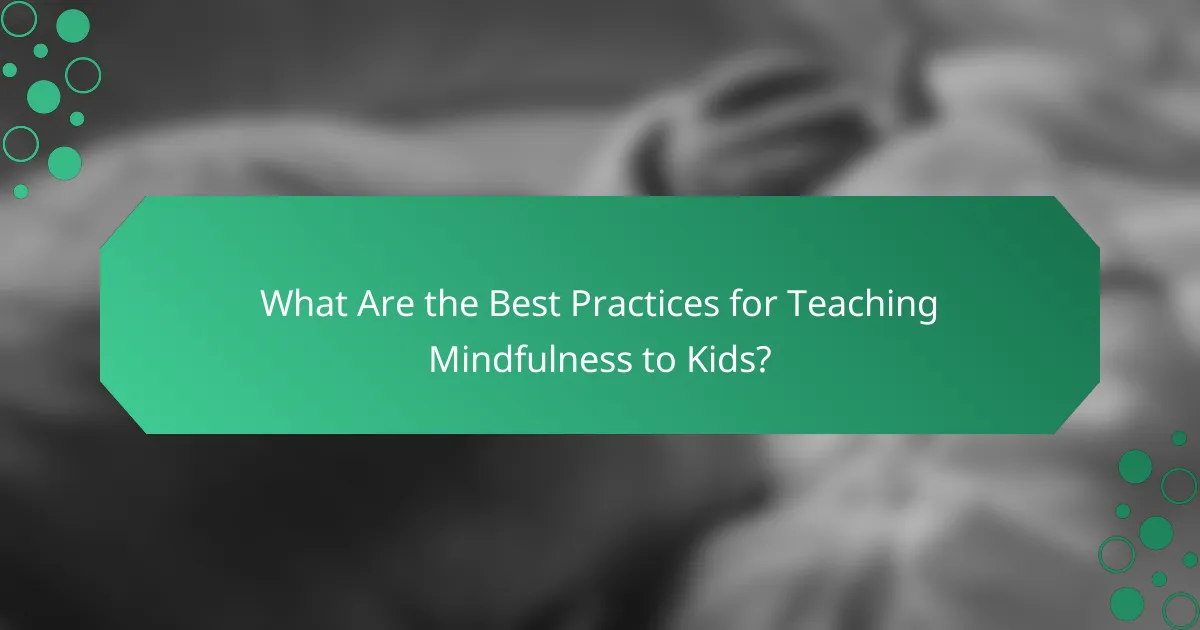
What Are the Best Practices for Teaching Mindfulness to Kids?
Teaching mindfulness to kids involves using techniques that resonate with their developmental stage and interests. Best practices include using simple language, incorporating playful elements, and demonstrating mindfulness through your own actions.
Use age-appropriate language
When teaching mindfulness to children, it’s crucial to use language that they can easily understand. Simplify concepts and avoid jargon; for instance, instead of saying “mindfulness,” you might refer to it as “paying attention” or “being present.”
Tailor your explanations to their age group. Younger children may respond better to short, clear phrases, while older kids can handle more complex ideas. Always check for understanding by asking them to explain back what they’ve learned.
Incorporate playfulness
Integrating play into mindfulness activities makes the practice more engaging for children. Use games, stories, or creative exercises that encourage kids to focus on their breath or sensations in a fun way. For example, you might play a game where they pretend to be different animals, focusing on how each one breathes.
Consider activities like mindful coloring or nature scavenger hunts, where children can explore their surroundings while practicing awareness. These playful approaches help maintain their interest and make mindfulness feel less like a chore.
Model mindfulness yourself
Children learn by observing adults, making it essential for you to model mindfulness in your daily life. Share your own mindfulness practices, such as taking deep breaths during stressful moments or expressing gratitude. This not only teaches them the techniques but also shows that mindfulness is a valuable part of life.
Be open about your feelings and how mindfulness helps you manage them. Encourage kids to notice their emotions and reactions, fostering an environment where they feel comfortable practicing mindfulness alongside you.
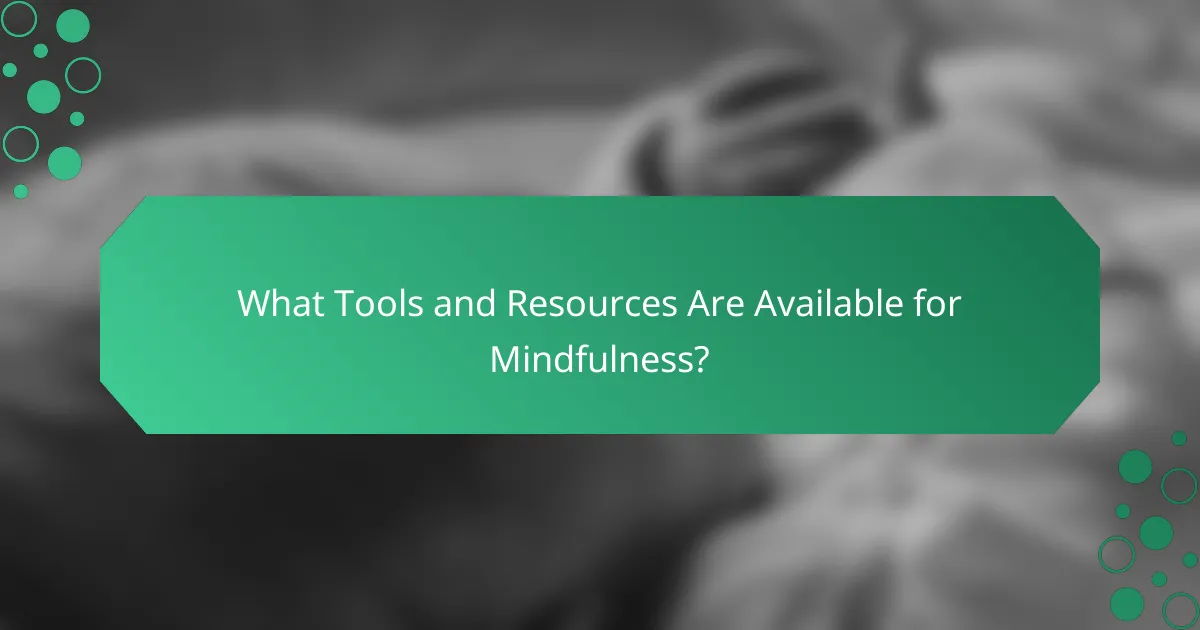
What Tools and Resources Are Available for Mindfulness?
Various tools and resources can help introduce mindfulness to kids, making it easier for them to practice and enjoy its benefits. These resources include apps, books, and online courses that cater to different age groups and learning styles.
Mindfulness apps for kids
Mindfulness apps designed for children can provide engaging and interactive ways to practice mindfulness. Popular options include Headspace for Kids, Smiling Mind, and Calm Kids, which offer guided meditations, breathing exercises, and mindfulness games tailored for younger audiences.
When selecting an app, consider the age appropriateness, user interface, and whether it includes features that encourage regular practice, such as reminders or progress tracking. Many apps are available for free, while others may require a subscription or one-time purchase.
Books on mindfulness
Books on mindfulness can serve as excellent resources for both kids and parents. Titles like “Mindful Monkey, Happy Panda” and “The Color Monster: A Pop-Up Book of Feelings” introduce mindfulness concepts through storytelling and illustrations, making them accessible for younger readers.
Look for books that include practical exercises or activities to reinforce mindfulness practices. Many children’s books on this topic are available in print and digital formats, allowing for flexibility in how they are used.
Online courses for parents
Online courses aimed at parents can provide valuable insights into teaching mindfulness to children. Platforms like Udemy and Coursera offer courses that cover mindfulness techniques, child psychology, and practical strategies for incorporating mindfulness into daily routines.
When choosing a course, consider the duration, content depth, and reviews from other parents. Many courses are affordable, often ranging from $20 to $100, and can be completed at your own pace, making them convenient for busy schedules.
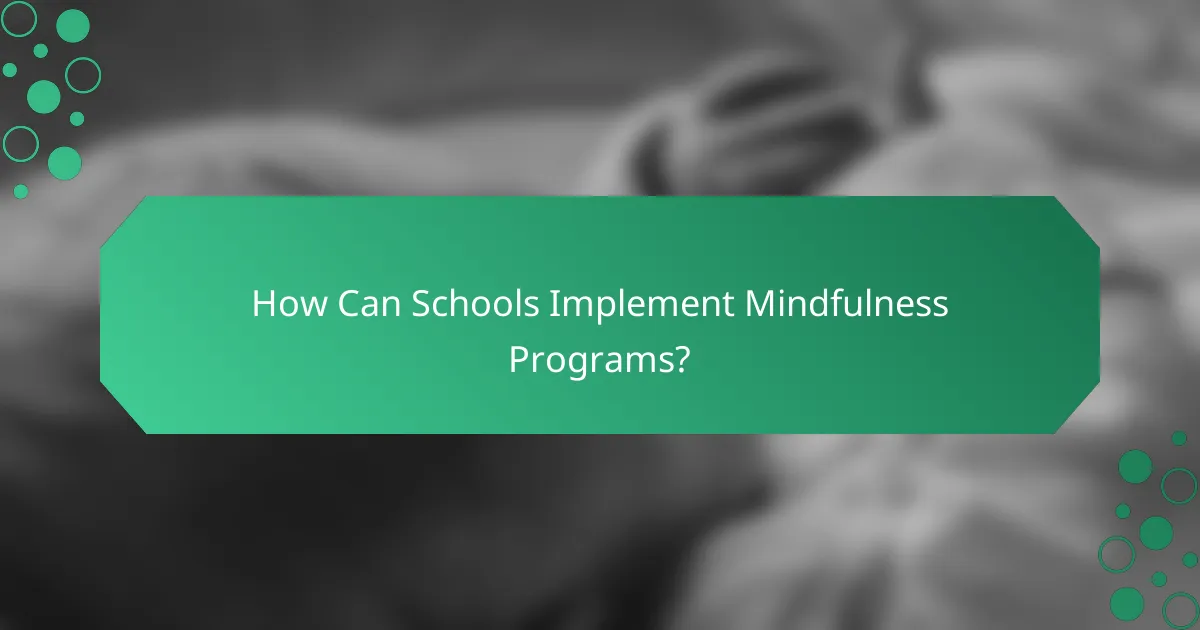
How Can Schools Implement Mindfulness Programs?
Schools can implement mindfulness programs by integrating structured activities into the curriculum, training staff, and creating a supportive environment. These programs can enhance students’ emotional well-being and focus, leading to improved academic performance.
Training Staff and Educators
Training staff and educators is crucial for the successful implementation of mindfulness programs. Workshops and professional development sessions can equip teachers with the necessary skills to guide mindfulness practices effectively. Consider partnering with experienced mindfulness organizations to provide comprehensive training.
Regular follow-up sessions can help reinforce techniques and address challenges that educators may face. Schools should encourage teachers to share their experiences and strategies to foster a collaborative learning environment.
Integrating Mindfulness into the Curriculum
Integrating mindfulness into the curriculum can be done through dedicated classes or by incorporating practices into existing subjects. For example, short mindfulness exercises can be included at the beginning of the day or before tests to help students focus and reduce anxiety.
Additionally, teachers can use mindfulness techniques during lessons to promote engagement and emotional regulation. Simple practices, such as breathing exercises or guided imagery, can be seamlessly woven into various subjects.
Creating a Supportive Environment
Creating a supportive environment is essential for the success of mindfulness programs in schools. This includes establishing quiet spaces where students can practice mindfulness techniques, such as meditation or deep breathing, without distractions.
Encouraging a school-wide culture of mindfulness can also enhance the effectiveness of these programs. Activities like mindfulness challenges or school-wide mindfulness days can promote participation and enthusiasm among students and staff alike.
